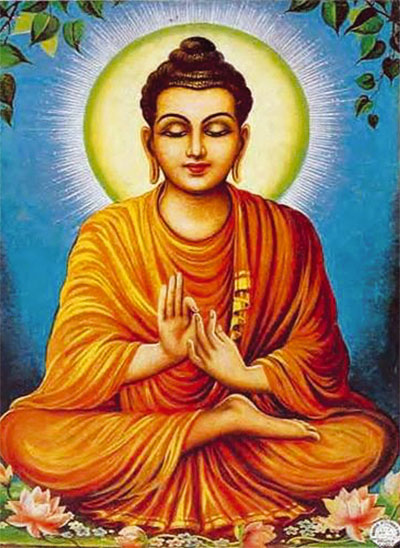
Siddartha Gautama, who was to later become the Buddha,on his first exposure to the world outside his palace — where he was surrounded by opulence and luxury — saw three men: a sick man, an old man and a dead man. This for him defined samsara or the phenomenal world, manifestation of dukha that was to become the first of the four noble truths of Buddhist teaching. The resolution of this suffering was to come from the sight of the fourth man, a rishi, who looked peaceful, composed and beyond suffering.
The core of the Buddhist world view and doctrine is that despite suffering, humankind is capable of experiencing nirvana or freedom through meditation. Nagarjuna postulated the doctrine of sunyata pointing to the emptiness of worldly experiences. Both ideas were enough to lead Buddhism as the dominant religion of India and beyond. Both dukha and sunyata were responsible for the concept of karuna or universal compassion, which was the sine qua non of Buddhist thought.
While one cannot deny the validity of old age, disease and death as the defining features of samsara, a Hindu could question the image of the rishi, or the sage person, as the perfect man who has overcome suffering through meditation. Is that the only way out of suffering? Or is it just one of many ways? What about the bhakta and the rasika? Later, Buddhism brings in bhakti as a valid source of knowledge and therefore moksha, but surprisingly avoids aesthetic discourse and does not advocate the undertaking of aesthetic experience despite the fact that Buddhists were the most prolific image makers and mural painters.
Asvaghosa’s Budhacharita is considered to be one of the first poetic compositions in Sanskrit, rich with flourishes of language. Sanchi, Amravati, Nagarjunakonda and Ajanta, among others, stand out as testaments of Buddhist visual art. Despite this Buddhsim does not undertake a formal aesthetic discourse and does not recognise art as a valid or transcendent experience. Hinduism on the other hand takes a firm stand on aesthetics very early in the tradition.
The vedas recognise the kavi or poet as prajapati or leader. The Upanishadic sentence ‘rasaivo saha’ is considered the seminal concept of rasa which was to come later. However it was Bharata’s Natyashastra, moving on to Anandavarsha’s Dhyanyaloka and then to Abhinavagupta’s Abhinavabharati and ending with Pandit Jagannatha’s concept of ramaniyata, that the rasa doctrine becomes the flag bearer of Hindu aesthetics and remains unchallenged.
The central plank of rasa is that the refined aesthetic experience that arises from embracing the rasa of art objects, be they sahitya, kavya, shilpa, natya or chitra, is akin to brahamananda, the bliss of Brahmn itself. The only concession Hindu aesthetics makes is that the rasananda is brahmananda sahadora, the twin brother of Brahmn and this makes the rasa experience one step removed from the experience of Brahmn. Hindu art in its manifold aspects remains life-affirming, sensually beautiful but always pointing to serene spirituality, bridging the gap between the sacred and the spiritual.





Be the first to comment